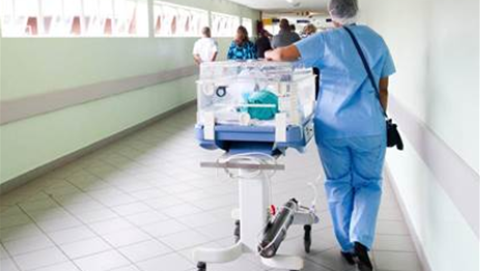ISP Vividwireless has revealed plans to commence stage two testing of next-generation mobile broadband technology in western Sydney, with a series of range trials to be conducted at Horsley Park.

The second stage of the trial of Time Division Duplex Long Term Evolution (TD-LTE) technology involves a single Huawei base station located near the equestrian centre at Horsley Park.
It was designed to test the range of Huawei's technology in outer urban and wooded areas, where the geography and building structures differed from that of the inner city.
Engineers also planned use Horsley Park to test outdoor customer premise equipment (CPE) on the network that could be sold as a "semi-fixed" wireless style service.
Inner-city tests
Vividwireless also showed off speed tests today from the first round of tests conducted with two base stations located in the inner-southern Sydney suburbs of Redfern and Zetland.
The tests were conducted in 20 MHz of spectrum in the 2.3 GHz band – one of two frequency bands that TD-LTE was capable of operating in.
Engineers spent the past month driving up to four kilometers from each base station "in concentric circles every half kilometre" to test the capabilities of TD-LTE from the middle to the edge of the cell sites.
The engineers not only tested the speeds from their vehicles but also from inside various buildings.
The tests saw "consistent" downlink speeds of between 40 Mbps and 70 Mbps with an uplink of 46 Mbps for these inner-city sites, according to chief executive Martin Mercer.
Additional lab tests had been able to push the downlink as high as 128 Mbps but this was achieved in part by sacrificing the uplink.
The speeds were achieved by engineers using test kit because production dongles were not yet available for use.
As with other telco trials of LTE, the ISP's test were unable to demonstrate the impact of network load once hundreds or thousands of users were connected.
But Vividwireless did produce some latency test results, which it pegged at a consistent 20 ms.
"Latency is a fraction of what we see on the WiMAX network, which is of course a vast improvement on what we've seen with 3G," Mercer said.
Commitment?
Mercer talked up the potential speed improvements of a TD-LTE network at an event in Sydney today.
"The technology is far more mature than we originally expected," Mercer said.
"It's also at a [deployment] price point where we could reasonably take it to market."
But Vividwireless has not yet signed a contract to roll out TD-LTE technology – something Mercer said in part was predicated on the company attracting enough funding for planned large-scale rollouts on the east coast of Australia.
The ISP has already deployed limited base stations in Sydney and Melbourne. However, Mercer said Vividwireless was in advanced technical planning to significantly expand on those foundations.
"What we have in Sydney [and Melbourne] now is nothing more than a footprint," Mercer said.
"It'll take us 12 months from when we secure funding to roll out [the rest of the network] on the east coast.
"The funding discussions are well advanced. We're in discussions with a number of operators in the region.
"The question for us now is do we roll out TD-LTE on the east coast when we have that rollout [or stick with our current chosen technology WiMAX]?"
Mercer similarly told iTnews late last year that Vividwireless' LTE trials were nothing more than a sign of the company assessing its technology roadmap.
"WiMAX 802.16m and TD-LTE are basically on a converging path so we want to make sure we understand how TD-LTE compares to WiMAX in an actual operating environment rather than just a lab," Mercer said at the time.
"[But the trial] doesn't suggest any immediate plans to move [away] from WiMAX".




_(5).jpg&h=140&w=231&c=1&s=0)




.png&w=100&c=1&s=0)

 iTnews Benchmark Security Awards 2025
iTnews Benchmark Security Awards 2025
 Digital Leadership Day Federal
Digital Leadership Day Federal
 Government Cyber Security Showcase Federal
Government Cyber Security Showcase Federal
 Government Innovation Showcase Federal
Government Innovation Showcase Federal
 Digital NSW 2025 Showcase
Digital NSW 2025 Showcase












_(1).jpg&h=140&w=231&c=1&s=0)



